After the night before my spirits were good to start the day. Passing some llamas in a field I made my way to Tal-y-Bont station and then on to Harlech.
Harlech Castle stands high on a cliff and the road towards the sea runs almost directly below, outwards for nearly three quarters of a mile, past a golf course to the dune-backed sea. It is hard to believe that the castle was once at the water’s edge, the cliff rising directly from the waves, making it virtually unapproachable by sea. While the land is gradually sinking and the Lost Cantrefs drowned beneath Cardigan Bay, the volume of river-eroded material running out of Snowdon is enough to build a giant sandbar for miles south along the coast. At the edges the land is never still.
So, the day proper starts with a mile walk beneath the Harlech dunes.
Eventually the path cuts inland where the Snowdonian sands give way to rocky cliffs. As in many areas the railway cuts close to the sea, but the path goes through Llanfair (yet another) and few hundred yards inland of the railway, but then cuts back towards the sea at Llandanwg.
Llandanwg is a scattering of a few old cottages and some newer bungalows, leading down to, as the proprietor of the ‘Y Maes Café‘ proudly announces, a beach that was in 36th position in best beaches in a Sunday Times listing.
St Tanwg’s Church sits behind the dunes, but so closely that the sand seems to be fighting to get in; on one side a low window is filled in with stone where the sand is piled to its sill. It was closed when I visited, but is evidently open on Saturdays, Fridays and other times when manned by volunteers.
Unfortunately, Y Maes Café does not serve breakfasts, but over a cheese and ham toastie, I read the Daily Post, a North Wales paper, and see that new gypsy caravan site pitches are to be introduced across North Wales; however, whilst Flintshire, which already has 66 pitches, is to be asked to provide an extra 32, the rest of North Wales, Anglesey, Conwy and Denbighshire, which currently have no sites at all, will only be asked to provide a grand total of 16 between them. Flintshire is once more feeling it is the dumping ground for anyone the rest of England and Wales does not want.
The treatment of gypsies has been abysmal over the years. During the war the effect of the Holocaust amongst the gypsy population of Germany was even more thorough, albeit less well known, than it was amongst the Jewish population. However, whilst the exposing of the concentration camps led to a mass sympathy with Jews, which would have been rare before, there has never been any comparable sympathy for the Gypsy, who are hounded across Europe and the UK with vitriol that would not have felt out of place in 1930s Germany.
One of the differences is that the post-war Jewish ‘problem’ could be made to literally ‘go away’. Hitler‘s final solution was the gas chamber; the post-war nations’ solution was Israel. Somewhere for Jews to go that was not here. In an unholy alliance of Zionism and latent anti-Semitism, a nation was born; it is no wonder it has been a cause of friction ever since. I’m sure if there had been a convenient part of Egypt or West Africa, where the local inhabitants were ‘underusing’ the land (nomad farmers for example) and this declared a homeland for Gypsies, then maybe late 20th and early 21st century history would be different.
But, as it is, the persecution and vilification started by Hitler continues today.
I recall hearing a French Canadian, and two Romanians discussing Gypsies in terms that they would not have dreamed of using for any other group: they were simultaneously ne’er-do-wells who skived and lived off the State, and also all really rich with fancy cars, not to mention criminal intent. For each generalisation there was at least one example, usually from a newspaper story. I recall also the mayor of one major Northern Italian city say to a reporter "they’re not like us, they have brown faces.".
In the UK in the 1960s an act of Parliament made it easier for the police to evict and move on Gypsies who are camped illegally. Given it is almost impossible to get planning permission for a Gypsy camp, this effectively means anywhere. However, as a sop to liberalism, the same act put a responsibility on local authorities to create a certain number of sites. In fact the number of pitches they were to provide accounted for barely a tenth of the known travelling Gypsies at the time: the real agenda was still to get them to ‘settle down’, become like ‘normal’ people.
In fact, local authorities across the UK failed to provide even a fraction of the already insufficient number, and more recently even this minimal (and ignored) statutory requirement was dropped.
Beyond St Tanwg’s Church, the path cuts across flat grass towards a sandbar-closed estuary, almost a tidal lagoon. The bar was presumably not always there as it is ‘Bar Newydd‘, the ‘new bar’, but now nearly cuts off the waters behind. Where the river cuts through a narrow channel, the edges are perhaps 40 yards apart, but I guess it is difficult to bridge on shifting foundations, especially as boats need to pass below: an ideal place for one of those rope-hauled rowing-boat ferries.
However, there is no bridge or ferry and so the Coast Path cuts inland up the banks of the river, and through the grounds of an outdoor pursuits centre where a group of teenagers had just arrived back from a session on the water and were stripping off wet suits.
The Path misses Llanbedr itself, but, as it cuts back towards the sea, skirts Llanbedr Airfield. This is marked as ‘disused’ on the map, and several of the old hangers and buildings are clearly used for a variety of commercial uses. However, later as I go past the far side of the airfield, the runways look as though they are still maintained. Maybe this is retained as an emergency runway for military use.
The ‘lagoon’ is a sort of L-shape with one arm of the L cutting up the river towards Llanbedr, and the other running behind Bar Newydd towards Shell Island where there appears to be some sort of yacht club. When the road past the airfield meets this broad arm, it turns and runs alongside it towards Shell Island.
On the Coast Path map there is a dashed line running out from this point, across the broad arm, and straight onto the sandbar. If I could cross there it would mean I could walk the length of the bar rather than across the wetlands along the official Coast Path route – my personal rule was that it was OK to ignore the official Coast Path if it meant I could be closer to the sea.
There were clearly 4×4 tracks leading out to the island that sits in the middle of the broad arm of the lagoon, so I set off onto the island and walked round to the other side. The route over had been firm enough, but at the other side the way was much softer and I decided the straight line across was either for yet lower tides, or maybe an administrative boundary!
So I retraced my steps to the landward side of the lagoon, and was sorely tempted to follow the road straight to the club on Shell Island, but while strictly closer to the sea, still it felt a little like cheating, so instead I followed the path round the back of the airfield and then along wooden decked paths across the wetlands behind the lagoon.
Partway along I spotted something beside the path. It was two adders sunning themselves. I’ve never seen an adder in the wild before. One started to move leisurely into the grass when I approached, but the other ignored me and only buried its head slightly when I started to photograph, as if by ignoring me I would go away.
Across the marshes, the path gets back onto solid sand, and follows a road almost back towards the direction I came. It is as if the Coast Path planners were guilty … having cut across the marshlands rather than taking the direct route along the road, they had cut off a lot of beach, so the path almost turns back on itself in order to recapture some of the missed sand.
Behind the dunes is a campsite, with just a smattering of campervans and tents in it. They are very spread out and it is a ‘basic’ site with, it appears, just water and fire points.
I know I must cross over the dunes at some point, but they are high ones, maybe 50 feet or more, and from experience on Anglesey I know dunes can be deceptive. Also I didn’t want to ‘cheat’ and cut onto the sand too early! Eventually there was a road, part covered with sand, leading to a car park, so I decided that, in the absence of any obvious Coast Path signs, this was the way to go.
There followed about two and half miles’ walking along a near-deserted beach backed by high dunes. The sun fought the clouds and highlighted beach sculptures as seabirds paddled on the shoreline.
While working out how to get onto a beach is rarely difficult (albeit with exceptions like this one), working out where to get off can often be problematic. Happily this time there was a tall red and white striped pole to mark the end of a boarded path across the soft sands to where there was a small picnic place, and more boards cutting inland and eventually joining a small lane. An information board was set in a foot-like mound of concrete, with words that had clearly been cut into the wet mixture when it was laid:
llwybrau hen oesau dan hiraeth y dwr
fronds flutter on ice-built roads
The latter is not a translation of the former, which seems to says something like, ‘the routes of ancient times beneath waters of longing’. Hiraeth is that untranslatable word, which is so quintessentially Welsh; it is an unsatisfiable longing or yearning, especially for homeland, rather like the Portuguese ‘saudade‘ or German ‘sehnsucht‘.
After cutting across a few fields, past ruins and old farm machinery, the path leads out onto the road, which it follows almost all the way into Barmouth. The road down into the campsite where the campervan is parked is almost straight away and I’m tempted to pop down for a quick cup of tea, but decide that if I do that I will probably not start again, so continue along the road.
Barmouth stretches for about a mile and a half, a ribbon development between hillside and sand. At the outskirts the Coast Path cuts down, past a wonderful red-painted clapperboard beach house, onto the groyne-sliced sands, and a beautiful walk in the late afternoon sun.
I had thought of going as far as Fairbourne, across the rail bridge, but as I get to Barmouth, my feet are already very sore. I notice that the train is in just 25 minutes; if I go on I will have to wait more than four hours until the ten o’clock train. I might have considered this if the way had continued flat beyond Fairbourne, but, while the railway and road are cut into the cliffside, there is no pedestrian route. I could probably have managed more beach and road walking, but hill tracks and forest paths do not seem a good idea in the falling evening.
So, back to Tal-y-Bont and the mile-and-a-half walk to the campsite, and, boy, do the legs and feet feel more tender after sitting for half an hour on station and train. Stopping was probably a good idea!
In Tal-y-Bont there is an Italian restaurant ‘Tonis‘ and outside a pizza takeaway van run by Toni‘s son Christian. I decide to opt for his ‘Gladiator‘, that is a ‘bit of everything’ meat pizza, but where this is not the mixed scattering on a standard ‘meat feast’ pizza, but more like every layer put on top of the last.
We talk pizzas and pies, thin Roman pizza and Cornish pasties. I learn that the pastry of the Cornish was originally just to hold the meat within. With blackened hands the miners would break off the top of the crust, eat the filling with a fork and then discard the dirty pastry. Also, like a Bedfordshire clanger, early Cornish pasties would have a second, sweet end for desert. However, they never had carrots, the soil was too thin for carrots in Cornwall, the carrot is the preserve of the Devon pasty. And I find I have forgotten the name of the local equivalent that did not mix potatoes and meat, but had them at separate ends.
When talking pizza, Christian said that they too had originally been dough plates, for holding food, not eating. I was reminded of the old bread trenchers, used as plates at the upper end of the table, then passed down for the minions to eat, with some of the meat juices, and maybe the odd forgotten morsel of flesh, sticking to the thin bread.
The idea of pizzas, now eaten as the classic Roman dish, but once being simply plates, is fitting. When Aeneas was given safe passage from the burning Troy and sailed away to found a new city, he was told he should build when he and his crew ate their tables and chairs. At first he thought it a foolish prophecy. However, at a later point, they have for some reason no furniture and so make tables and chairs out of plain dough. You can guess the end of the story: they are sailing up a river, the Tiber, and have run out of food; in desperation they start to eat the dough furniture and then remember the prophecy. Rome was founded where a dough table was eaten and now they eat dough plates.
Christian also told me stories of the wool trade. Welsh wool was the finest in the world and during the American Civil War Merionethshire supplied the Confederacy while Montgomeryshire supplied the Union, between them growing rich on the bloodshed across the Atlantic.
He also told me of a town up in the hills whose name translates as ‘English Town‘. This dates back to the drovers, who would come from England, collect cattle and other animals from the Welsh coast, and then drive them across the mountains to the markets in England. ‘English Town‘ was a place where they stopped on the way. The soft feet of the geese would get sore from the long journey, so they were wrapped in little leather bags, which were then covered in pitch, to make tiny galoshes, booties for the journey.
When Christian heard about the walk, he gave me my pizza for free, so, for the second night, I ended the day basking in the extraordinary kindness of those I have met on the way.



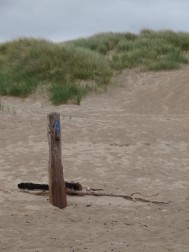
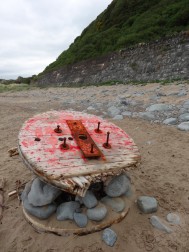

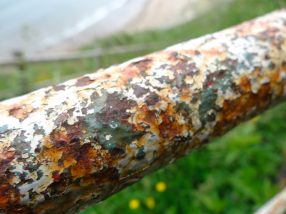
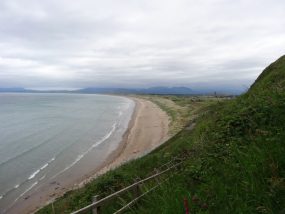


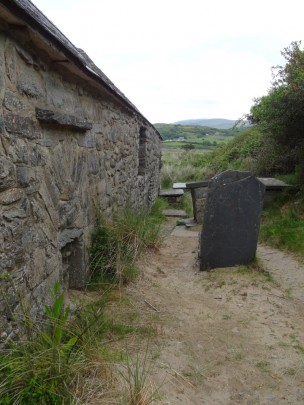
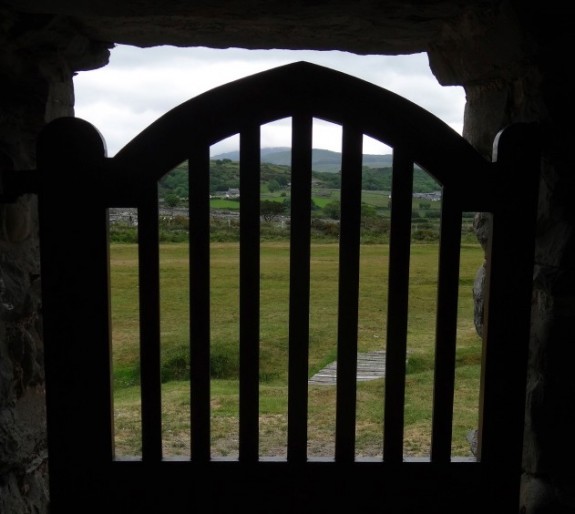
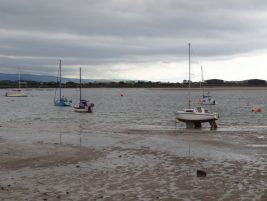
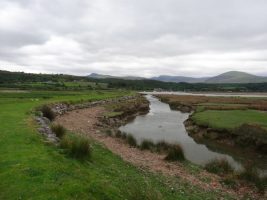
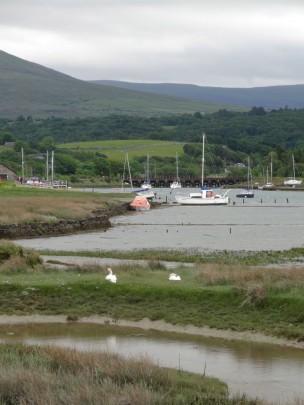
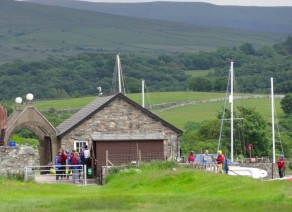

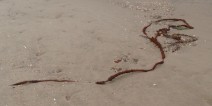
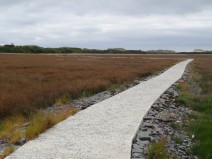
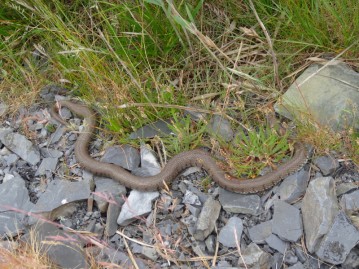
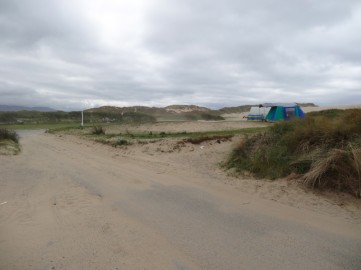
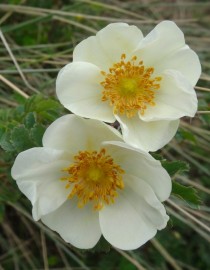
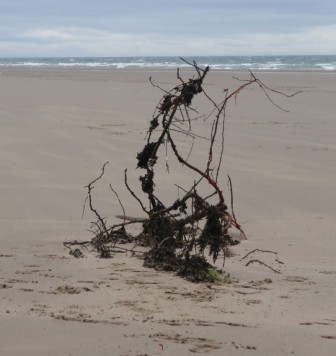


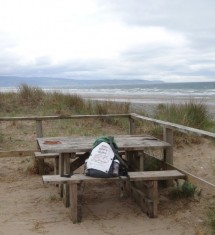
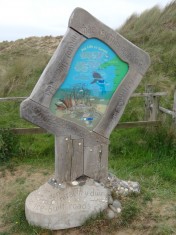
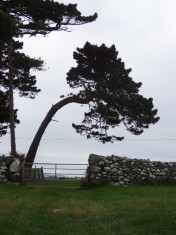
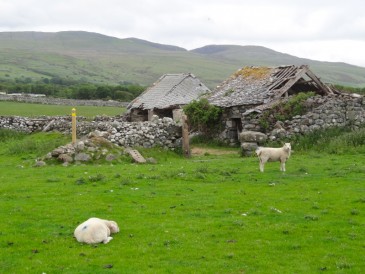
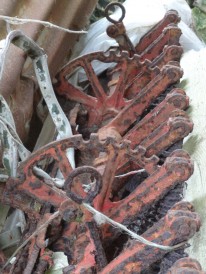
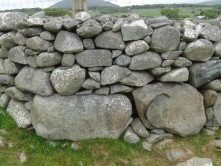
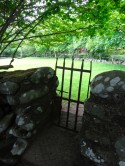

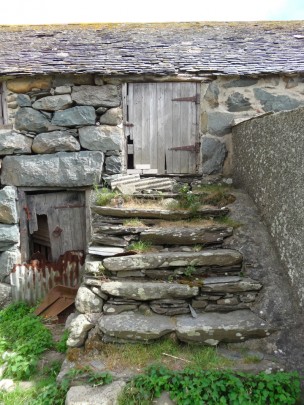

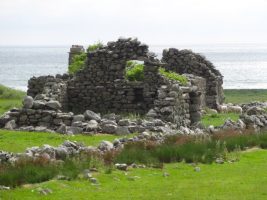
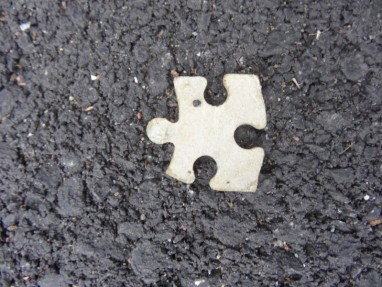
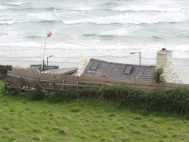

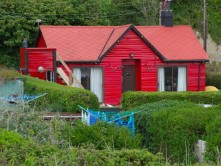
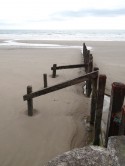
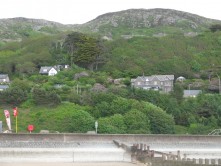
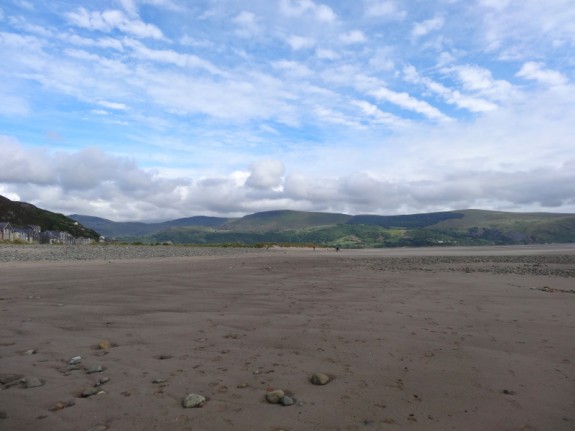
WOULD LOVE TO TRY THIS WALK FROM HARLECH
TO BARMOUTH MAY TRY IT IN 2 STAGES OWEING
TO NEVER BEEN ON AREALLY LONG WALK
LOOK FOR WOULD AS I HAVE BEEN VISITING
SHELL ISLAND 1984 FOR ABOUT 10 YEARS THEN MOVED TO A CARAVAN IN HARLECH FOR 10 ORSO YEARS.